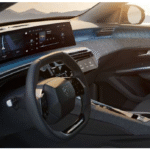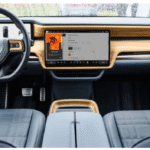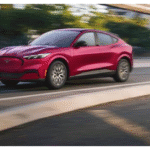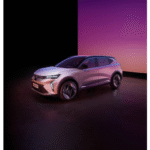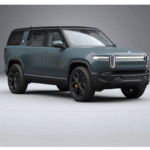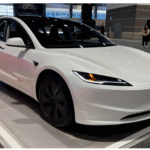The move toward electric cars seems like a sure thing. The roads are quieter, the air’s cleaner, and you skip the gas station — what’s not to like?
But look a bit closer, and there’s more going on than meets the eye. No pitchforks here. This isn’t about rejecting change. It’s about asking, “Are we ready for everything this shift brings?”
Let’s explore the real — and often understated — challenges electric vehicles pose. Not to scare you. Just to look honestly at what’s coming.
Battery Fires: Rare, But Fierce
Every new technology has its teething issues. With electric cars, the biggest headline-grabber has been the battery.
When a gas-powered car crashes, there’s a risk of fuel leaks. In an electric vehicle, the risk shifts to something called thermal runaway — where a damaged or overheated battery cell triggers a chain reaction of heat and smoke. It doesn’t happen often, but when it does, it’s intense.
These fires burn hotter and longer than gasoline fires, and in rare cases, they can reignite hours after the initial incident. A 2022 report from the National Transportation Safety Board (NTSB) confirmed that lithium-ion battery fires require different firefighting methods than conventional vehicles, often needing tens of thousands of gallons of water.
But here’s the part that doesn’t get enough attention: battery fires in electric cars are significantly less common than fires in gasoline vehicles. A 2023 study by AutoInsuranceEZ found that hybrid cars had the highest fire risk, followed by gasoline cars — with electric vehicles at the bottom of the list.
So what’s being done about it?
Manufacturers are evolving fast:
- Tesla uses a liquid-cooled battery design that separates modules to prevent chain reactions and includes software that automatically limits power if overheating is detected.
- General Motors implemented battery monitoring systems and physical separators after its Chevy Bolt recalls in 2021, adding a diagnostic tool to detect cell issues before they escalate.
- Hyundai, after dealing with Kona EV fires, restructured its battery packs and partnered with LG Energy Solution to improve thermal insulation between cells.
- Rivian and Ford now integrate advanced cooling loops directly within the battery modules, helping prevent any one section from overheating.
And beyond hardware, the National Highway Traffic Safety Administration (NHTSA) is working on a standardized response guide for first responders. This includes new labeling on electric vehicles and online resources for fire departments to adapt their protocols.
The takeaway? These incidents are scary — but they’re rare. And most of the industry is learning from every single one. This isn’t a red flag. It’s a roadmap.
The Invisible Cost: Mining for Clean Energy
When you plug in your electric vehicle, it feels clean. Quiet ride, zero tailpipe emissions, guilt-free miles. But have you ever wondered what goes into making that battery?
Electric cars rely on raw materials like lithium, cobalt, and nickel — elements not found in neat, polished packs but buried deep in the Earth, often in vulnerable regions. In the Democratic Republic of Congo, for example, cobalt mining has been linked to unsafe working conditions and child labor, as reported by Amnesty International. Meanwhile in Chile’s Atacama Desert, lithium extraction has raised concerns about water depletion and ecological imbalance, with studies from The New York Times highlighting the growing tension between clean energy goals and local sustainability.
It’s not the driver’s fault. And it’s not a reason to abandon electric vehicles. But it is something we need to factor into the bigger picture. For each electric car, about 20 to 30 kilograms of lithium is needed — and demand is accelerating.
So what’s being done? More than you might think.
- Tesla published its Impact Report in 2022 outlining plans to source cobalt only from suppliers audited against human rights standards.
- BMW has started buying cobalt directly from mines in Morocco and Australia, bypassing middlemen to ensure traceability and safety in the supply chain.
- Volkswagen joined the Global Battery Alliance, a World Economic Forum initiative aiming to establish a “Battery Passport” — a digital tool that tracks where every battery material comes from, and under what conditions it was mined.
- On the recycling front, companies like Redwood Materials and Li-Cycle are scaling up operations to recover metals from old batteries — turning waste into new supply. Some projections say up to 95% of valuable battery materials can now be recovered through advanced recycling methods.
And the innovation keeps coming. Researchers are exploring alternatives like sodium-ion batteries, which rely on more abundant materials, and solid-state batteries, which are safer, longer-lasting, and potentially more eco-friendly.
Is the system perfect yet? Not even close. But the fact that these conversations are happening — and that major automakers are making supply chain ethics part of their brand — is a sign we’re moving in the right direction.
Charging Woes: Infrastructure Isn’t There Yet
On paper, charging an electric car is simple. But in reality?
Ask someone who lives in an apartment. Or someone who drives long stretches through rural highways.
Charging takes time. It’s not five minutes at a pump — it can be 30 minutes to 12 hours, depending on the station. And public chargers? Many are either taken, broken, or incompatible with your car.
Range anxiety is real. One commuter told he’s mapped out every charger between his home and work — just in case.
What’s being done?
Governments are investing billions into public charging networks. Companies like Electrify America and ChargePoint are expanding coverage. Even gas stations are getting in on the game, adding high-speed chargers next to traditional pumps.
Still, if you don’t own a garage or live in a city? You’re playing catch-up.
Cold Weather Challenges: Not All Climates Are Equal
In regions where winter bites hard — like Canada, Minnesota, or Northern Europe — electric cars face an extra layer of difficulty.
Batteries perform poorly in the cold. Some can lose 30 to 40 percent of their range in freezing temperatures. Heating the cabin also drains power, which means shorter trips and longer waits at the charger.
Preconditioning the vehicle — warming the battery while it’s still plugged in — can help improve range and efficiency. But not all drivers know about this feature, and not all electric vehicles are equipped with advanced thermal management systems yet.
What are manufacturers doing to address this?
Newer electric cars are being built with heat pumps, which are far more energy-efficient than traditional resistive heaters. Automakers like Tesla, Rivian, and Volkswagen have begun designing vehicles with weather-adaptive systems to keep battery performance steady in colder climates.
However, older models may still experience performance drops until broader software updates or retrofits become available.
Ownership and Depreciation: Not Everyone Wins
Let’s talk money.
The upfront cost of electric cars is dropping — but it’s still higher than gas-powered models. A decent electric vehicle starts at around $35,000 to $45,000. Add taxes, home charger installation, and maybe new wiring — and the total climbs.
Resale? Also, tricky. Electric vehicles lose value fast. Some early adopters are finding that their 3-year-old car is worth 40 to 50 percent less, even if the battery is fine.
What’s helping?
Some states offer tax credits, rebates, or grants. Others give electric vehicles access to carpool lanes and parking perks. And manufacturers are improving warranties and trade-in programs to sweeten the deal.
Who Wins and Who Waits: The Human Side of Electric Vehicles
Electric vehicles are changing the way people think about transportation — but that experience varies depending on where you stand.
Wealthy Drivers:
For early adopters, electric vehicles offer the full package — luxury, innovation, and sustainability. From instant torque to near-silent drives, it’s a new kind of prestige. Many can afford in-home charging setups and enjoy weekend getaways in high-performance models like the Porsche Taycan or Tesla Model S. For them, it’s not just transportation — it’s a lifestyle upgrade.
Middle-Class Families:
Many are making the switch, especially as electric vehicles become more affordable. With the help of government incentives, some families are installing solar panels and saving on both gas and electricity. While long-distance charging infrastructure is still growing, range anxiety is easing, thanks to newer models offering over 300 miles per charge and an expanding network of fast chargers. For families juggling budgets, the low maintenance costs of electric vehicles are a major plus.
Lower-Income Drivers:
The transition is slower — but signs of progress are real. Used electric vehicles are beginning to drop in price, especially as more people upgrade. Public charging access is improving in cities and apartment complexes. Some local governments and utilities are even offering rebates and community charging programs to help renters and underserved neighborhoods catch up. With the right policies in place, the electric revolution can become truly inclusive.
Interior Designs: Function or Flash?
Electric cars often have spacious cabins. No engine means more legroom and even an extra front trunk.
Luxury electric vehicles? They shine. Ambient lighting, glass roofs, vegan leather, massive screens — like stepping into a tech lounge.
But budget models? Some feel bare. Overuse of touchscreens for basics like air conditioning can be distracting. And not everyone wants voice commands to turn up the heat.
Manufacturers are listening. Some now bring back physical knobs. Others offer minimalist interiors by design. But comfort varies a lot between models.
Quick Comparison Table
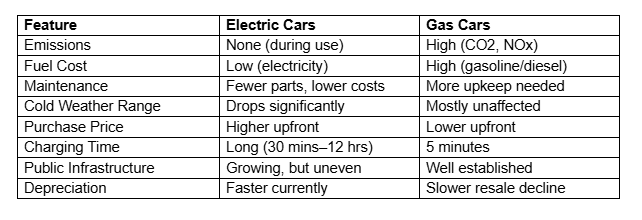
So What’s the Bottom Line?
Electric cars are not a scam. They’re not a savior either. They’re a work in progress — a powerful shift that brings both hope and hard lessons.
The good news? Carmakers are listening. From fire-resistant battery casings to smarter software and better charging access, the fixes are already rolling out. The real question isn’t “Are electric cars dangerous?” — it’s “Are we ready for the tradeoffs?”
And the answer? Maybe not yet. But we’re getting there.

